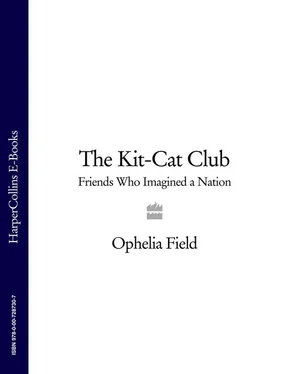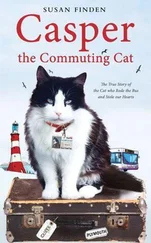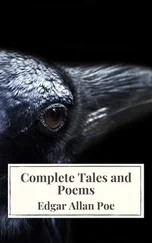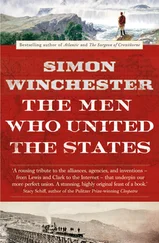Note on Dates, Money, Spelling and Punctuation
Before the English calendar changed in 1752, New Year's Day was 25 March. To avoid confusion for modern readers, all dates in this book, unless indicated, take 1 January as the beginning of the new year, such that a date which would have been ‘5 February 1699’, for example, is given here as ‘5 February 1700’. In addition, the ‘Old Style’ (Julian) calendar was ten or eleven days behind the ‘New Style’ (Gregorian) calendar used on the Continent. Unless otherwise stated, all dates are Old Style.
I have often followed an original value in pounds, shillings and pence (or guineas) with an approximation of its relative purchasing power today, though such calculations are notoriously problematic.
I have followed modern usage with respect to spelling and punctuation, but—to keep a dash of original flavour—not always with respect to capitalization. Abbreviated words have been expanded in all instances except titles of printed works, or where poetic metre demands.
I have also, for the sake of efficiency, used a number of modern words that did not exist in the late seventeenth or early eighteenth century, such as ‘journalist’, ‘scientist’ or ‘publisher’ (Addison was the first to use the word ‘editor’ in its modern sense in 1712).
PROLOGUE DRYDEN'S FUNERAL, MAY 1700
Thy Wars brought nothing about;
Thy Lovers were all untrue.
'Tis well an Old Age is out,
And time to begin a New.
JOHN DRYDEN, Secular Masque (1700)
ON A WARM London afternoon, 13 May 1700, a crowd of mourners assembled beneath the turret and weathercock of the Royal College of Physicians, then a handsome brick building on the west side of Warwick Lane, near Newgate Prison. They were attending the funeral of former Poet Laureate, John Dryden. Among the writers, actors, musicians, patrons, politicians and publishers gathering to pay tribute to the man generally acknowledged as the greatest writer and critic of his generation were over a dozen members of a controversial dining society known as the Kit-Cat Club.
One of Dryden's patrons, Kit-Cat member Charles Sackville, 6th Earl of Dorset, had earlier arranged for Dryden's embalmed body to be exhumed from the local churchyard of St Anne's in Soho, so that it could be reburied, with due pomp and ceremony, in Westminster Abbey. The Kit-Cat Club financed this second funeral at the suggestion of Dr Samuel Garth, another of the Club's members, who was both Dryden's personal physician and one of his literary disciples. Any of the aristocratic Kit-Cats with good credit could have single-handedly paid the funeral's bill, totalling only £45. 17 s . (or around £5,500 today), but by transforming the occasion into a communal gesture the Club was demonstrating its generosity and good literary taste to Londoners. Though both Whigs and Tories attended the funeral, no public occasion could take place in the 1700s without one of these two political parties attempting to dominate it, and in this case the Tories resentfully acknowledged that the Kit-Cats were posthumously appropriating Dryden to their distinctively Whig narrative of English literature.
At four o'clock, Dr Garth and the other Fellows descended from the oak-panelled Censors' room on the Royal College's first floor to host a drinks reception, with music and ‘funeral baked meats’, 1 for the assembled mourners. Garth, who wore a distinctive red cloak, delivered a Latin oration that offended several attendees for being addressed to the ‘great god Apollo’. 2 Such an unchristian oration cleverly avoided the issue that the man whom the Kit-Cats were about to bury in an Anglican abbey had died a Catholic. One of Garth's literary enemies claimed the physician delivered the oration standing on a rotten beer barrel that collapsed halfway through. This slap-stick moment was probably a fabrication, however, since another anti-Kit-Cat observer, who said Garth ‘threw away some words and a great deal of false Latin’, fails to mention it. 3
At five o'clock, the coffin—containing the body wrapped in a flannel shift, tied at the feet like a fishtail and packed in bundles of rosemary—was loaded into a horse-drawn hearse adorned with black feathers. Eight musicians in mourning scarves led the procession playing crape-covered oboes and trumpets. At the head of the cortège walked the College beadles, carrying staves. There were three other funeral coaches, one carrying Dryden's widow and son. Over fifty private coaches followed behind.
Departing the Royal College's forecourt, they processed down Warwick Lane and Ludgate Hill, passing the Fleet, a former tributary of the Thames that had dried into a fetid ditch. The carriages following the hearse became entangled with several ‘moveable Bawdy-houses’ (prostitutes in hackney coaches) as they passed Chancery Lane, 4 the passengers bracing themselves as horses reared and carriages lurched against one another on the cobbles. The jam then cleared as they slowly proceeded west along the Strand, where gaps between the buildings offered glimpses of the equally traffic-clogged Thames below. At the hour Dryden's cortège passed, the Thames would have been at low tide, revealing the large mud-brown beach onto which shoeless children and scrap collectors were able to wander unimpeded, no embankments yet having been built. The procession finally turned down Whitehall, past the higgledy-piggledy buildings of Old Westminster Palace, towards the Abbey. In the surrounding streets, crowds gathered to watch the strange spectacle of England's nobility, dressed in unseasonably heavy wool mourning suits, paying their humble respects to a near-bankrupt author.
What really bothered several contemporary observers about this Whig-dominated event was the promiscuous mingling of England's social classes. As government ministers, dukes, earls and knights abandoned their carriages and liveried footmen in the Abbey's yard, they found themselves literally on an equal footing with tradesmen, actresses and lowly born ‘Playhouse Sparks’. Tom Browne, a satirist, mocked the impropriety of the motley congregation as ‘A Crowd so nauseous, so profusely lewd, / With all the Vices of the Times endued…’ 5
The procession was led through the Abbey by a figure whose runtish stature was undisguised by his high-crowned periwig and high-heeled shoes. This was Charles Montagu, King William III's former First Lord of the Treasury and another key Kit-Cat member. Tom Browne considered Montagu the epitome of what was loathsome about the new, affluent class of Whig politicians: ‘grown sleek and fat’, proud, corrupt and pretentious, flattering himself as the ‘Chief of Wits’. 6 That Browne was able to publish such insults with impunity indicated, however, the reality of Montagu's situation in May 1700: he had fallen far enough from the King's favour that he would be openly attacked in the next parliamentary session. Montagu's Kit-Cat colleagues, who knew his virtues of generosity, loyalty and intelligence, probably granted him pride of place in the procession to demonstrate their support for him during this difficult time.
Hobbling behind Montagu, leading a ‘Troop of Stationers’, came Dryden's half-crippled publisher and the Kit-Cat Club's founding father, Jacob Tonson. Tonson was grieving for the loss of his most lucrative and prestigious author, whose poem Absalom and Achitophel had launched Tonson's publishing career two decades earlier. Dryden had recognized Tonson as a cut above the Grub Street printers who seemed to ‘live by selling titles , not books’, 7 telling Tonson: ‘I find all of your trade are Sharpers & you not more than others; therefore I have not wholly left you,’ and signing a letter ‘not your Enemy & maybe your friend, John Dryden’. 8 The longevity of the two men's collaboration, on numerous publications and as co-editors on a series of best-selling poetic Miscellanies , suggested an intellectual empathy greater than they had ever openly acknowledged to one another.
Читать дальше












